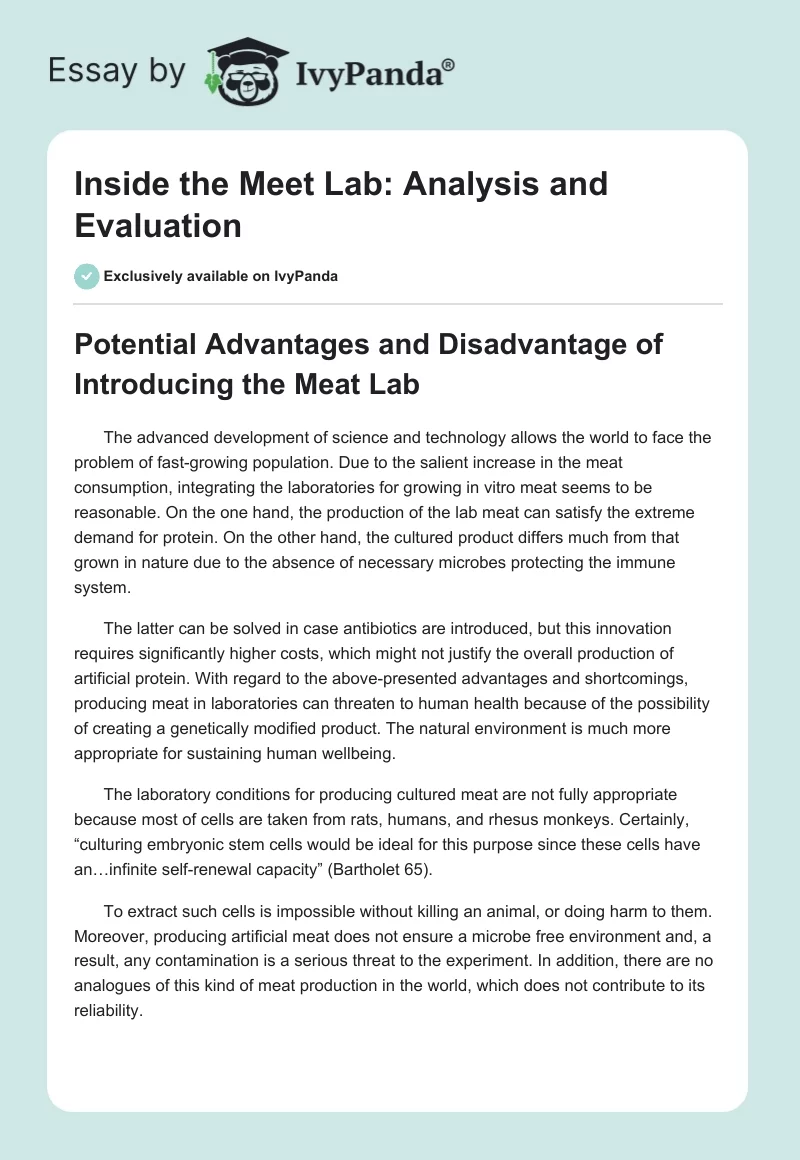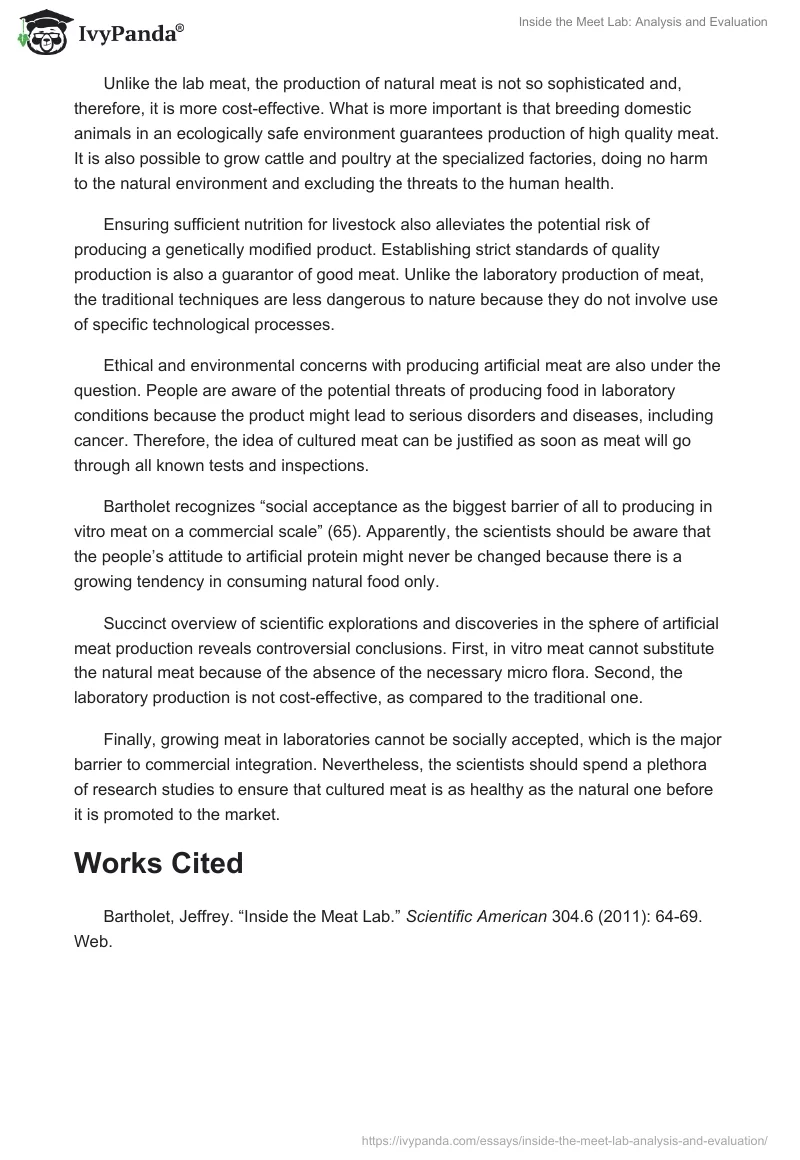Potential Advantages and Disadvantage of Introducing the Meat Lab
The advanced development of science and technology allows the world to face the problem of fast-growing population. Due to the salient increase in the meat consumption, integrating the laboratories for growing in vitro meat seems to be reasonable. On the one hand, the production of the lab meat can satisfy the extreme demand for protein. On the other hand, the cultured product differs much from that grown in nature due to the absence of necessary microbes protecting the immune system.
The latter can be solved in case antibiotics are introduced, but this innovation requires significantly higher costs, which might not justify the overall production of artificial protein. With regard to the above-presented advantages and shortcomings, producing meat in laboratories can threaten to human health because of the possibility of creating a genetically modified product. The natural environment is much more appropriate for sustaining human wellbeing.
The laboratory conditions for producing cultured meat are not fully appropriate because most of cells are taken from rats, humans, and rhesus monkeys. Certainly, “culturing embryonic stem cells would be ideal for this purpose since these cells have an…infinite self-renewal capacity” (Bartholet 65).
To extract such cells is impossible without killing an animal, or doing harm to them. Moreover, producing artificial meat does not ensure a microbe free environment and, a result, any contamination is a serious threat to the experiment. In addition, there are no analogues of this kind of meat production in the world, which does not contribute to its reliability.
Unlike the lab meat, the production of natural meat is not so sophisticated and, therefore, it is more cost-effective. What is more important is that breeding domestic animals in an ecologically safe environment guarantees production of high quality meat. It is also possible to grow cattle and poultry at the specialized factories, doing no harm to the natural environment and excluding the threats to the human health.
Ensuring sufficient nutrition for livestock also alleviates the potential risk of producing a genetically modified product. Establishing strict standards of quality production is also a guarantor of good meat. Unlike the laboratory production of meat, the traditional techniques are less dangerous to nature because they do not involve use of specific technological processes.
Ethical and environmental concerns with producing artificial meat are also under the question. People are aware of the potential threats of producing food in laboratory conditions because the product might lead to serious disorders and diseases, including cancer. Therefore, the idea of cultured meat can be justified as soon as meat will go through all known tests and inspections.
Bartholet recognizes “social acceptance as the biggest barrier of all to producing in vitro meat on a commercial scale” (65). Apparently, the scientists should be aware that the people’s attitude to artificial protein might never be changed because there is a growing tendency in consuming natural food only.
Succinct overview of scientific explorations and discoveries in the sphere of artificial meat production reveals controversial conclusions. First, in vitro meat cannot substitute the natural meat because of the absence of the necessary micro flora. Second, the laboratory production is not cost-effective, as compared to the traditional one.
Finally, growing meat in laboratories cannot be socially accepted, which is the major barrier to commercial integration. Nevertheless, the scientists should spend a plethora of research studies to ensure that cultured meat is as healthy as the natural one before it is promoted to the market.
Works Cited
Bartholet, Jeffrey. “Inside the Meat Lab.” Scientific American 304.6 (2011): 64-69. Web.


